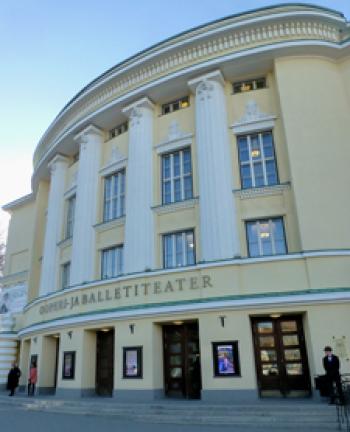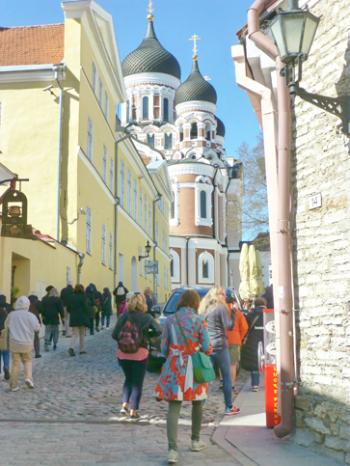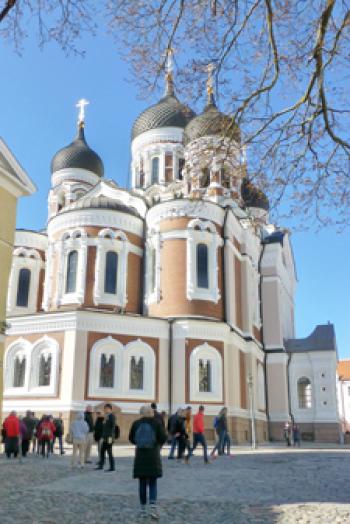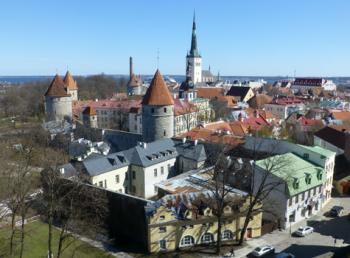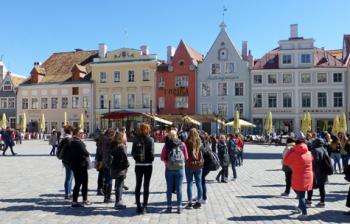The Baltics (Part 3 of 3)
This item appears on page 57 of the October 2017 issue.
Tallinn, Estonia
The third leg of my April-May 2017 group tour to the Baltic States and Berlin, partially hosted by New York-based tour operator smarTours, commenced upon our departing Riga, Latvia.
We traveled north along the Baltic coast, passing the important fishing port of Salacgri¯va. Between Riga and the Estonian border, we crossed four rivers that are sensitive, critical habitat and spawning grounds for the prized Atlantic salmon.
Continuing north along the coast, we crossed the border into Estonia (pop. 1.3 million), with our compass directing us to the popular seaside resort town of Pärnu.
Pärnu’s modest population of 44,000 swells dramatically during the peak summer months. The town has, since the mid-1800s, been known as a health resort/spa destination, offering restorative medical treatments, especially related to arthritis and the science of treating the joints.
My preference would have been to spend several days or longer in Pärnu partaking of mud baths and other treatments.
Our guide, Stephan, and I did discover MUM Café (Pühavaimu 15, Pärnu; phone +372 5669 9342), where, in an idyllic outdoor setting, I enjoyed the best tomato soup imaginable, resulting, I was told, from a special recipe that involved ample garlic, sour cream and a spice combination that would remain the chef’s secret.
The Estonia-Finland connection
As we continued northward, Stephan educated us regarding Estonia’s close economic relationship with Finland.
Tens of thousands of Estonians currently live and work in the Helsinki area of Finland, and thousands of Finns and expat Estonians regularly travel from Helsinki to Tallinn by ferry to holiday and shop in much-less-expensive Estonia.
The two countries maintain economic ties on multiple levels. This is one of the major reasons Estonia is more economically prosperous than its Baltic neighbors to the south and why it has a higher cost of living.
Along the way, we saw evidence of the wind farms that are becoming prominent in modern-day Estonia, providing an increasing portion of the nation’s energy needs.
We also were informed how large-scale choral music festivals — a very old Baltic tradition — were both covertly and creatively employed by pro-independence groups to promote national unity and sovereignty during the decades of Soviet occupation. This reached a climax during the tenuous period just prior to Estonia’s gaining freedom, as the USSR was in the final stages of disintegration.
Tallinn beckons
We arrived in Tallinn (pop. 436,000) to find a dynamic, progressive capital city that has greatly evolved over the last two decades. While the population of Estonia (1.3 million) continues to decrease, such is not the case with Tallinn, as a construction boom continues.
Tallinn is one of Europe’s best-preserved medieval centers, with two kilometers of the original thick, ancient wall that surrounded the city still intact. There are six entry gates, and more than 20 of the original 46 towers have somehow survived the passing centuries.
A morning guided walking tour of the 12th-century marvel revealed a maze of cobblestone streets and alleys and a divide between the upper and lower Old Town.
The focus of lower Old Town is busy Town Hall Square, where the weekly Wednesday craft market just happened to be in full swing as we arrived. This central meeting place is lined with medieval structures, including the Gothic-style Town Hall with its striking octagonal tower.
The Town Hall served as the center of civic life in Tallinn for centuries. Today, the square is home to scores of restaurants, galleries and the historic Town Hall Pharmacy, the Raeapteek, which is still in operation and includes a small museum displaying pharmacy-related artifacts.
Nearby, the Tallinn City Museum is housed in an old merchant’s house, with exhibits that present the city’s storied history.
Pedestrians rule
Old Town is relatively easy to explore on foot, including ancient spired churches and many imaginative museums that reveal the city’s historic and cultural traditions. One could spend days just visiting museums. Sweetshops offering marzipan as a decorative art form are tantalizing and abundant.
Twice during my explorations, I observed Estonian democracy in action in the form of ongoing small-scale protests outside the rather nonintrusive-appearing Russian Embassy.
In upper Old Town, we navigated the winding walkways, visiting the lavish, onion-domed Russian Orthodox cathedral and climbing to a viewpoint that provided good views of Old Town and surrounds. While exploring in my free time, I also noticed many well-preserved historic buildings on the fringes of Old Town.
Our centrally located hotel was just outside the eastern edge of Old Town, an easy 10-minute walk to Viru Gate, on the eastern section of the city wall.
One of the main old-city access points, the gate’s impressive stone towers were originally constructed in the 14th century as part of a larger gate system, then fused with the surrounding 16th-century city walls. Viru Gate remains one of Tallinn’s most recognized sights.
Hail the arts
On our free Thursday night in Tallinn, I discovered that the classical ballet “Giselle” was being performed at the Estonian National Opera, and I was able to secure a great seat for the performance for €22 (near $26). This classical masterpiece was the perfect complement to the modern ballet performance of “Piaff” that I attended the previous weekend in Vilnius.
Also in Tallinn, I had the opportunity to sample the public transport system, taking a bus to the expansive Kadriorg parklands to visit the Presidential Palace, followed by a stop at the nearby Art Museum of Estonia. The museum’s new and rather sleek structure houses both classical and modern Estonian artwork and also functions impressively as a multipurpose venue for the arts.
The Tallinn Botanic Garden is located in the same park, but time did not allow that inclusion.
The Tallinn public transport system consists of an efficient network of buses, trolleys and trams, most of which depart from Vabaduse Väljak (Freedom Square) at the southern boundary of Old Town.
Before you go
For information regarding my tour and a variety of other value-oriented group offerings in Europe, contact smarTours (800/337-7773, www.smartours.com).
In the final part of my “Baltic States & Berlin” odyssey, I will report on amazing Berlin plus an overnight Helsinki stopover.
You may reach Randy at 80 America Way, Jamestown, RI 02835; 401/560-0350, randykeck@yahoo.com.

